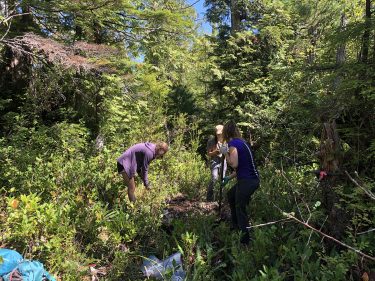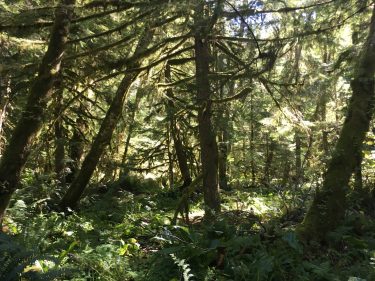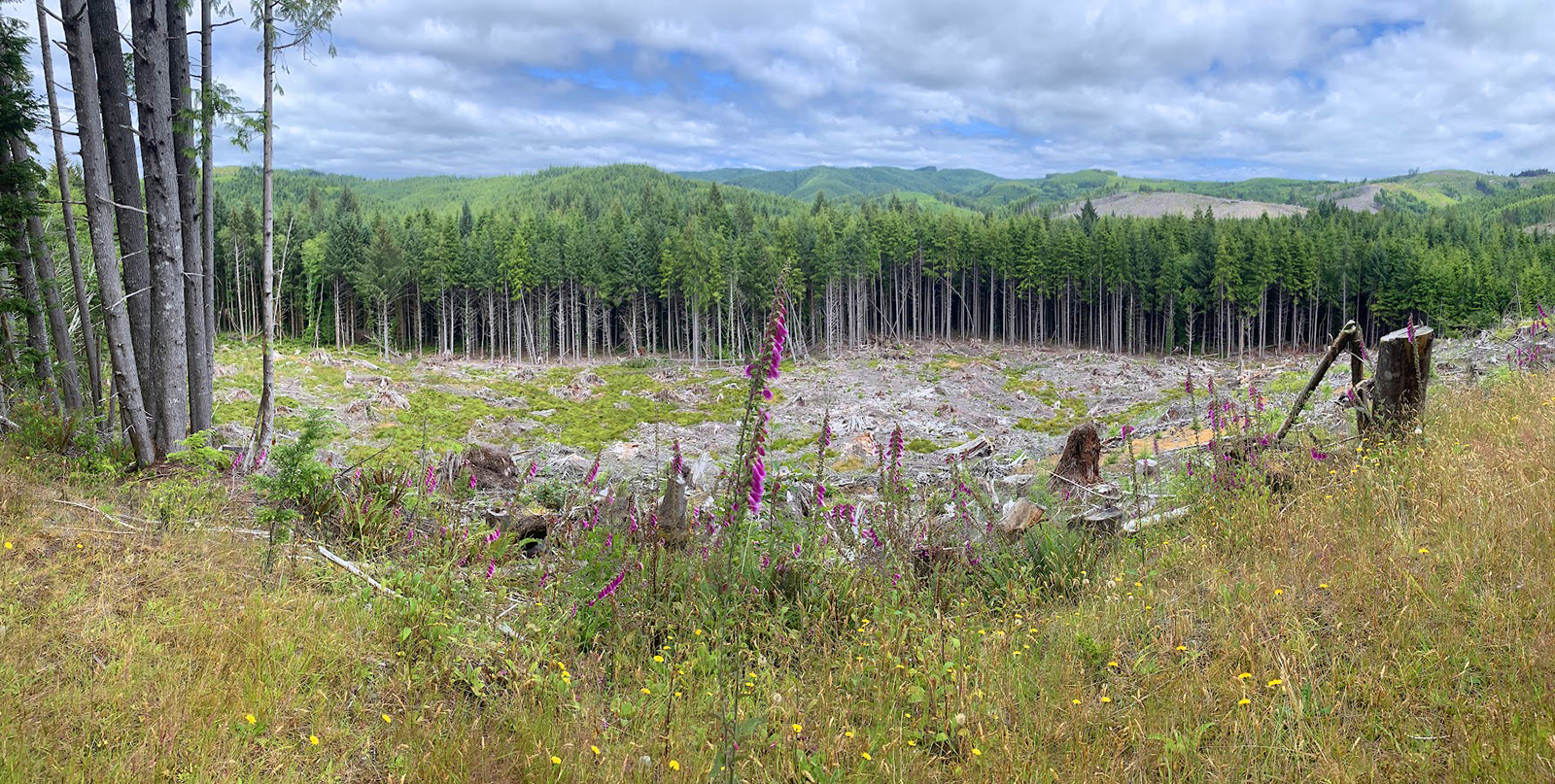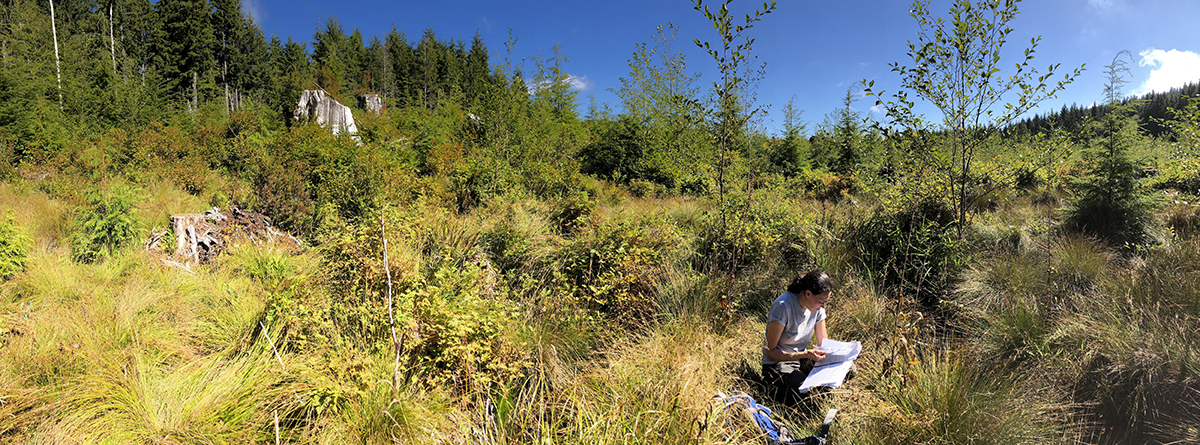
When it comes to climate change, an important question is not simply how can humans stop emitting greenhouse gases, but how can we remove the greenhouse gases that we’ve already released?
Many of Earth’s natural processes are already taking significant amounts of carbon dioxide out of the atmosphere, and our wetland ecosystems are some of the most effective at this work. These iconic locales, ranging from coastal mudflats to inland marshes, trap enormous amounts of carbon and serve crucial ecological functions that impact humans and wildlife alike. But a recent study led by UW researchers has located unmapped wetlands hiding in our forests — and found that they contain nearly five times more carbon than previously mapped areas.
“We call them ‘cryptic wetlands,’” said Anthony Stewart, a doctoral candidate in the School of Environmental and Forest Sciences and lead author on the study that appeared in Nature Communications. “They’re hard to locate with aerial photography because they’re covered by the tree canopy all year round, which means that there are lots of wetlands not being included in our national databases and maps. That leads to a very big underestimation of how much wetland carbon is actually out there.”
Locating these hidden, forested wetlands and figuring out how to protect them is urgent work, and could be a powerful tool in humanity’s approach to mitigating climate change.

‘Unsung heroes’ of the landscape
Most carbon on land is stored in the soil. Plants take carbon dioxide out of the atmosphere via photosynthesis, incorporate it into their cells, and when they die and decompose, that carbon becomes part of the soil itself. Ecosystems that take up more carbon than they release are known as “carbon sinks.”
Wetlands are particularly good carbon sinks because waterlogged soil is very low in oxygen. Plant matter decays much slower without oxygen present, which allows the carbon to remain intact rather than being released back into the atmosphere.
“They’re the unsung heroes of the landscape,” said Meghan Halabisky, a UW research scientist and co-author of the study. “They build climate resilience both directly by storing carbon and indirectly by mitigating the effects of climate change.”
In addition to removing carbon from the atmosphere, wetlands help improve water quality, reduce the impact of flooding, provide cool water to streams and rivers during the hot summer months, and serve as habitats for many unique species of plants and animals.
But the hidden wetlands the researchers investigated don’t look like your typical swamp.
“They’re really quite gorgeous,” Halabisky said. “They can be fully or partially covered by the tree canopy, and rather than standing water they often have hummocks, large bumps in the terrain with high and low spots. It’s mucky, muddy and hard to walk through, and they have unique plants that are specifically adapted to that low-oxygen soil environment.”
Because they’re so remote and covered by trees, these cryptic wetlands aren’t exactly easy to find — but the researchers were confident that the waterlogged temperate rainforest along the Hoh River on Washington’s Olympic Peninsula would yield results.
“I’ve been mapping wetlands for over 15 years, and I kept seeing this rich, dark dirt in wet forests, like black gold,” Halabisky said. “I realized that it wasn’t being studied very much as a carbon sink, and it made me curious to dig deeper.”

Digging for carbon
So how do you measure carbon in remote, densely forested soils?
“We dug a lot of holes,” Stewart said, laughing. “The only way to get soil carbon measurements is to dig into the soil, since there’s no way to sense it from above.”
Using mapping software, the researchers randomly selected a number of sites in the Hoh River watershed, one of the rainiest areas in the U.S. And since the sites were truly random, there was no consideration of how hard they might be to reach.
“We would drive on these remote, backcountry forest roads, bushwhack into the woods with our shovels and hoses and pumps, and dig a pit at least three feet deep,” Stewart said. “That lets us see all the different layers of the soil.”
They then packed the soil into bags and lugged it back to campus, where they analyzed it to see how much carbon it held.
“We also used remote-sensing data to extrapolate from our findings and estimate how much carbon is stored across the landscape,” said Halabisky, whose research focuses on using drones, satellites and lidar to study wetland ecosystems from above.
What they found was surprising. Not only were the soils in these wetlands full of carbon, they also accounted for 86% of all the wetland carbon stored in the Hoh River watershed. In other words, nearly five times more carbon was stored in these cryptic wetlands than in the wetlands currently mapped by scientists and regulators.
“We’re not necessarily adding much to the total estimate of carbon storage in the area,” Stewart said. “But what we found is that much of it is stored in these cryptic carbon hotspots, and we don’t currently manage our land to conserve them.”
The future of wetland conservation

While defining what counts as a wetland may seem like a purely academic exercise, it has significant implications for conservation efforts. Because these forested wetlands have been difficult to find, they haven’t generally been included on government maps or covered by existing wetland protection regulations.
Additionally, the U.S. Supreme Court’s recent decision in Sackett v. Environmental Protection Agency created a significant conservation challenge: Now, in order for a wetland to be protected under federal law, it needs to have a connection to a permanent surface waterway such as a river or a lake.
“Other researchers, such as Irena Creed at the University of Toronto Scarborough, have shown that these wetlands are interconnected throughout the landscape even though it may not be obvious on the surface,” Stewart said. “This is a missing piece of the ecosystem that we have to consider when making conservation decisions.”
“You have the legal definition of a wetland, and then you have the ecological reality on the landscape,” said David D’Amore, a soil scientist with the USDA Forest Service and co-author of the study. “We can now predict where these forested wetlands are, and then land management plans can take that into consideration.”
With climate change impacts becoming an everyday reality, those federal land management plans are also increasingly concerned with protecting carbon sinks. Identifying carbon that is currently stored in the environment and predicting how it will be impacted by changes to land use is now a priority within the Forest Service.
But the future of wetland conservation remains uncertain, and the researchers expressed that further research was urgently needed to better understand these ecosystems and maintain their integrity.
“Washington state has pretty strong wetland protection laws, so that provides a buffer,” Halabisky said. “But many states do not, and things are going to change very quickly there.”
Scaling up

As is often the case, this study raised almost as many questions as it answered.
“There is so much more to learn,” Stewart said. “Have these wetlands been disturbed by previous forestry practices? If so, does that contribute to more or less carbon in the soil? Does this soil carbon have particular properties that make it more resistant to decomposition? Does it play a large role in how the landscape functions?”
This study was funded in part by a Phase 1 grant from the NASA Carbon Monitoring System, and recently received an additional $1 million in Phase 2 funding that will allow the team to expand its research into other geographical areas.
“We’re going to take this model and scale it up, first to Washington state and eventually the whole country,” Halabisky said. “The goal is to get these hotspots included in our carbon mapping so we can make informed conservation decisions going forward.”
The project will continue to be a close collaboration between the UW researchers and partners with the Washington State Department of Ecology, the USDA Forest Service and the EPA, which has helped to facilitate its national scope.
In the meantime, these cryptic wetlands will continue to do the important work of keeping carbon in the ground — out of sight, but no longer out of mind.
Story by Will Shenton

